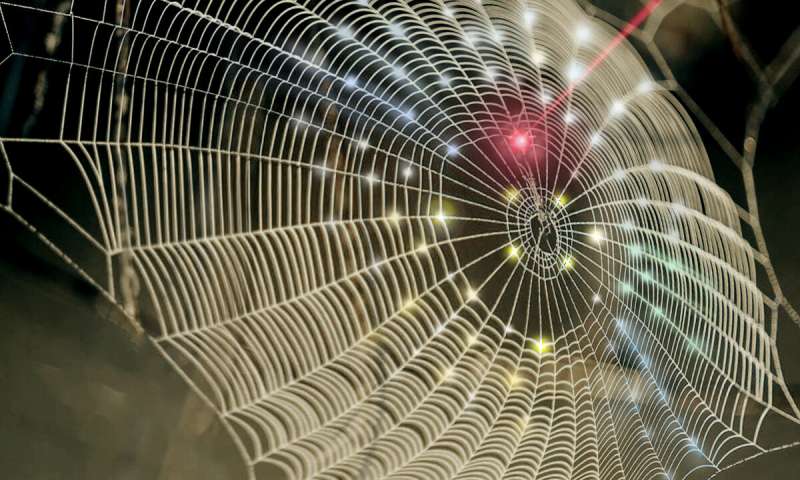
Purdue University innovators are taking cues from nature to develop 3-D photodetectors for biomedical imaging.
The Purdue researchers used some architectural features from spider webs to develop the technology. Spider webs typically provide excellent mechanical adaptability and damage-tolerance against various mechanical loads such as storms.
"We employed the unique fractal design of a spider web for the development of deformable and reliable electronics that can seamlessly interface with any 3-D curvilinear surface," said Chi Hwan Lee, a Purdue assistant professor of biomedical engineering and mechanical engineering. "For example, we demonstrated a hemispherical, or dome-shaped, photodetector array that can detect both direction and intensity of incident light at the same time, like the vision system of arthropods such as insects and crustaceans."
The Purdue technology uses the structural architecture of a spider web that exhibits a repeating pattern. This work is supported by the National Science Foundation (NSF; CMMI-1928784) and the Air Force Research Laboratory (AFRL; S-114-054-002). It is published in Advanced Materials.
Lee said this provides unique capabilities to distribute externally induced stress throughout the threads according to the effective ratio of spiral and radial dimensions and provides greater extensibility to better dissipate force under stretching. Lee said it also can tolerate minor cuts of the threads while maintaining overall strength and function of the entire web architecture.
"The resulting 3-D optoelectronic architectures are particularly attractive for photodetection systems that require a large field of view and wide-angle antireflection, which will be useful for many biomedical and military imaging purposes," said Muhammad Ashraful Alam, the Jai N. Gupta Professor of Electrical and Computer Engineering.
Alam said the work establishes a platform technology that can integrate a fractal web design with system-level hemispherical electronics and sensors, thereby offering several excellent mechanical adaptability and damage-tolerance against various mechanical loads.
"The assembly technique presented in this work enables deploying 2-D deformable electronics in 3-D architectures, which may foreshadow new opportunities to better advance the field of 3-D electronic and optoelectronic devices," Lee said.

